The Exhibition “War and Toys”
This is an exhibition that will be ending soon, as its duration is until August 16, 2019.
I saw the exhibition “War and Toys" (sponsored by the Shinshu War Materials Center and the Hachijuni Cultural Foundation). This is a project to exhibit toys and other items from the prewar and wartime periods and thereby tell the story of wartime circumstances.
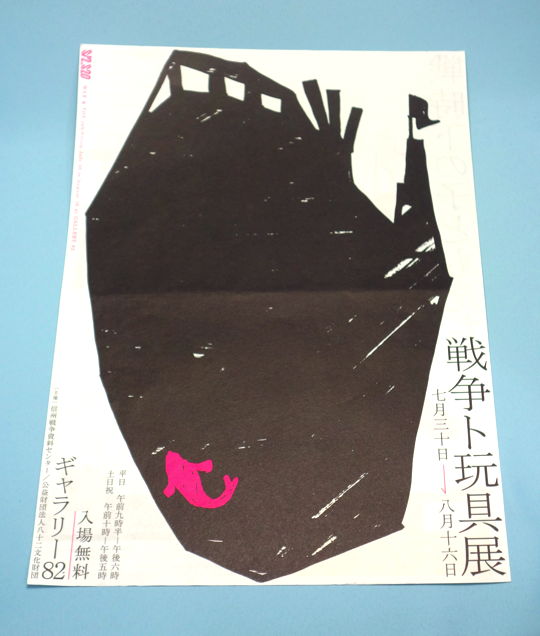
This is a picture of the flyer. There appear to be three different versions of the flyer.
The venue, Gallery 82 (Nagano, Japan). It is located about 400 meters from Nagano Station.
Admission was free, and also photography was allowed.
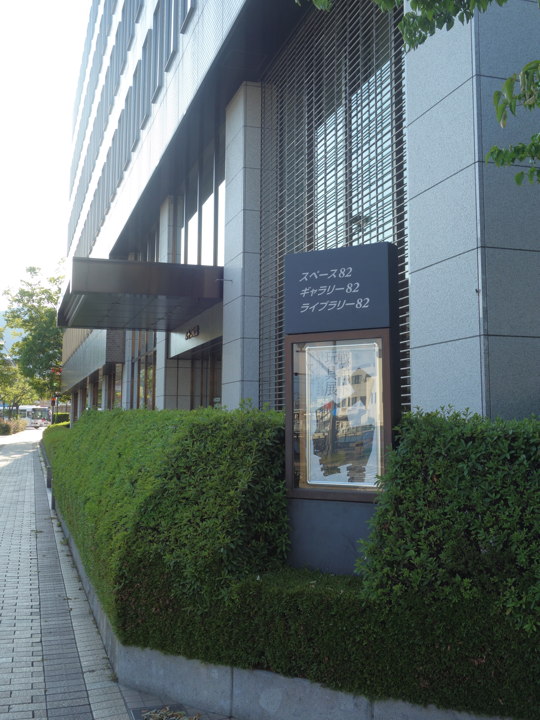
The policy of the Shinshu War Materials Center is based on “we don’t want to go to war," but they don’t appeal it loudly. It seems that they want to speak quietly it through the materials.
I decided to go because it seemed like I would be able to view the exhibit in a relaxed atmosphere.
There are 86 actual materials exhibited this time.
Among them, I will pick up only “E-sugoroku" (Japanese board game which is similar to western Snakes and Ladders) in this blog.
Unless I missed something, there were nine E-sugoroku on display at the exhibition. In chronological order…
(1) Women’s Life Sugoroku (1918, “Fujin Sekai" the appendix of New Year’s issue, Jitsugyo-no-Nihon Sha)
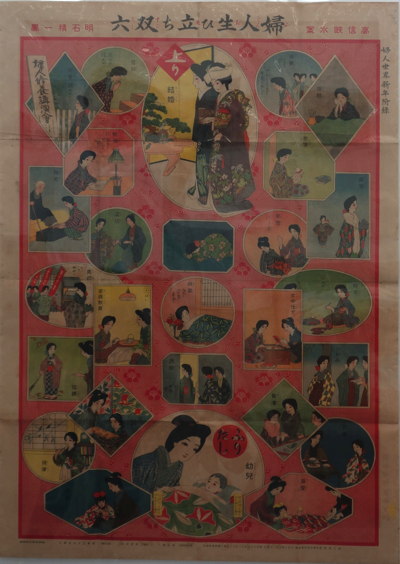
The first half is “Infant" and the second half is “Marriage". The left half of the picture shows what was thought to be important to learn, such as “charity," “simplicity," “discipline," “obedience," “self-control," “respect for the aged," “study," and “cultivation. In the right half, there are things that one should not do, such as “blind love," “extravagance," “extravagance," “clumsiness," “thoughtlessness," “leaving things to housemaids," “pride," and “laziness.
(2) Ko-dakara Sugoroku (1919, “Fujin Sekai" the appendix of New Year’s issue, Jitsugyo no Nihonsha)
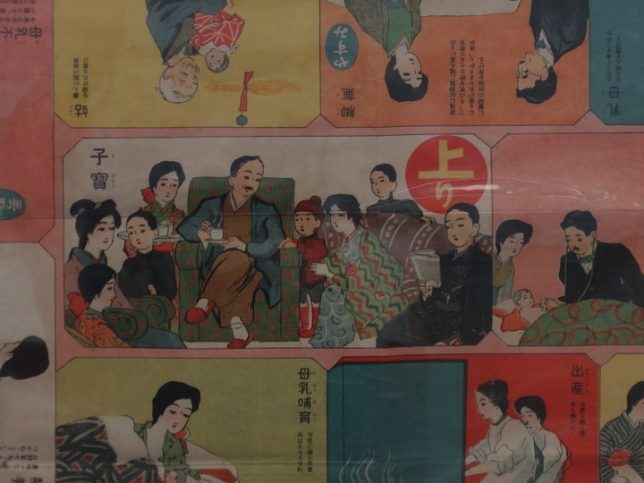
“Ko-dakara" means “the treasure that is children".
The first square is “marriage" and the second square is “childbirth".
I think this is the materials that shows what society was demanding of women.
In this period…
1918: Siberian intervention, Rice Riots.
1919: Paris Peace Conference, The March First Movement in Korea, The May Fourth Movement in the Republic of China.
1920: Establishment of the League of Nations, Establishment of the New Women’s Association.
(3) Japanese Army and Navy Military Sugoroku (1924, issued by Yashichi Yoshida)
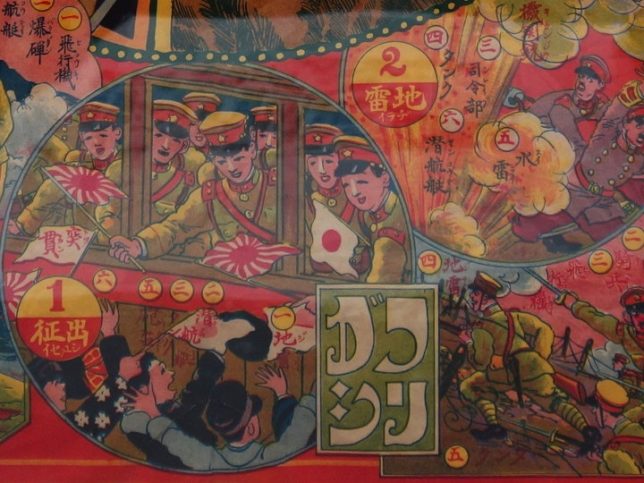
The explanatory board at the exhibition site says, “It may be an issued thing by a private store."
The first square is “Departure to War". Followed by “Mine", “Thrust", “Water Mine", “Machine Gun", “Airplane", “Bomb", “Cavalry", “Battery," “Red Cross," “Carrier pigeon" “Military Flag," “Tank," “Poison Gas," “Submarine," “Headquarters" and “goal".
1923: Great Kanto Earthquake.
1924: Crown Prince Hirohito (Emperor Showa) marries.
1925: Enactment of the Security Law.
(4) Chuko Sugoroku (1927, “Yonen-Club" the appendix of New Year’s issue (Dai Nihon Yubenkai Kodansha)
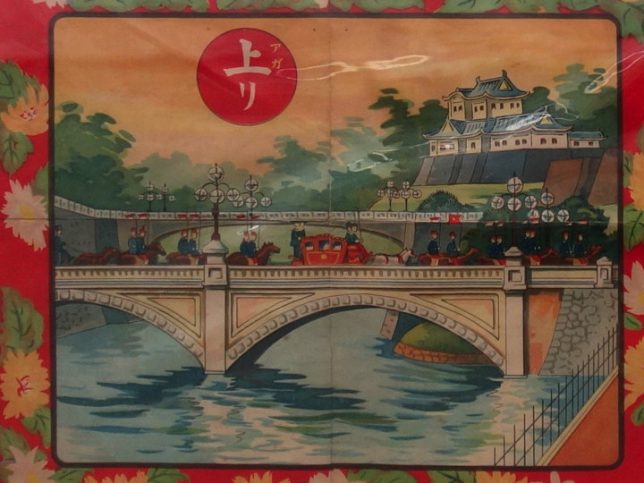
The first square is Kusunoki Masashige and Masatsura. Then General Nogi, Nawa Nagatoshi, Kawano Mitiari, and so on.
The goal is the Imperial Palace.
In this period…
1927: Showa Financial Collapse
1928: Huanggutun incident
1929: The Great Depression
1930: Showa Depression
1931: Manchurian Incident
(5) Second Sino-Japanese War Imperial Army Great Victory Sugoroku (1939, “Shufu-no-Tomo" the appendix of New Year’s issue, Shufu-no-Tmo sha)
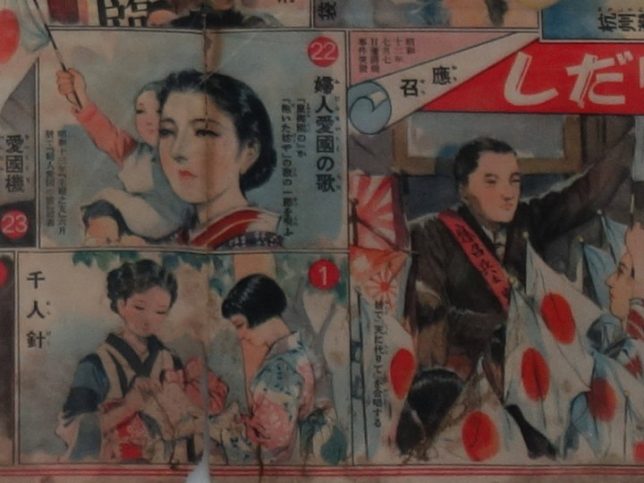
1933: Japan withdrew from the League of Nations.
1936: February 26 incident
1937: Marco Polo Bridge Incident, Battle of Shanghai (start of Sino-Japanese War).
So, this is a sugoroku published during the war. This is the appendix of “Shufu-no-Tomo", means “The Friend of Housewives".
(6) Imperial Army Banzai Sugoroku (1940, appendix to the new year issue of “Shojo Club" Dai Nihon Yubenkai Kodansha)
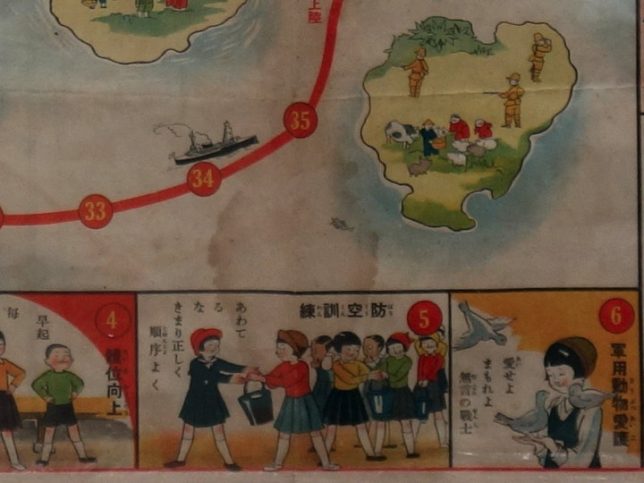
In the upper right corner, it says “Reviewed by the Intelligence Department of the Ministry of the Army and the Military Popularization Department of the Ministry of the Navy."
The instructions for playing Sugoroku read as follows.
“Before starting this Sugoroku, let us first thank the soldiers in the battlefield from the bottom of our hearts for their kindness and wish them long military fortune. This Sugoroku is a game that allows you to understand the mindset of girls in home front, and the situation in the battlefield. It is easy for anyone to play and can be played by a large group of people, so please play it with everyone in the house."
Here are some of the words that appear in the game.
“8, Comfort bag for soldiers. A girl’s kindness is in it."
“9, Savings. Saving is also a form of loyalty."
“13, Buy government bonds for long-term protection."
“28. Comfort the families of soldiers. Let’s all protect the families of soldiers and bereaved families"
“29 Beware of spies. Be careful in your conversations."
(7) Yokusan Sugoroku (December 1940, published by Manga-sha)
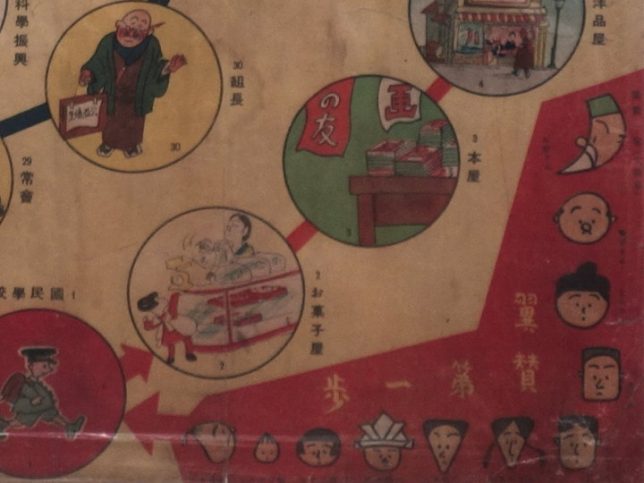
I have seen this characters before. It’s the “Yokusan Family" from the book I read earlier, “The Media Mix of Taisei Yokusan-kai". It was used also in Sugoroku.
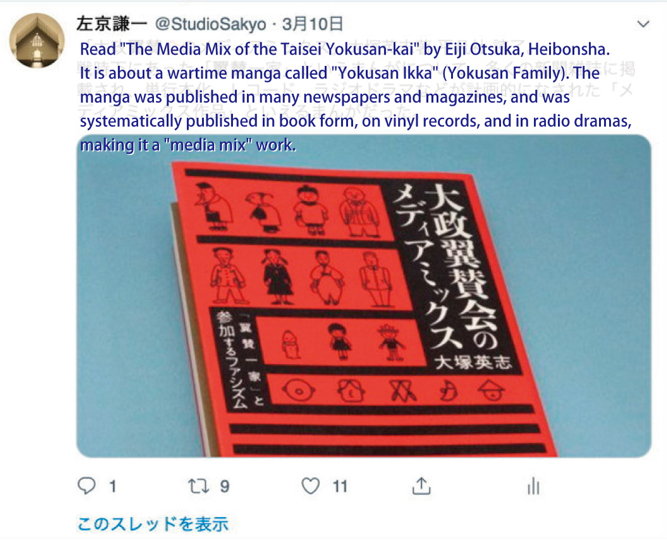
Since the Taisei Yokusan-kai (Imperial Rule Assistance Association) was established in October 1940, it means that they were pursuing various media strategies from the beginning. The “Yokusan family" named “Yamato Family" is in the lower right of the photo. It seems that many cartoonists drew their works on this character because they were free to use it if they paid a royalty fee.
(8) Soldier Sugoroku (1941, “Kokumin Ninensei" the appendix of New Year’s issue, Shogakukan)
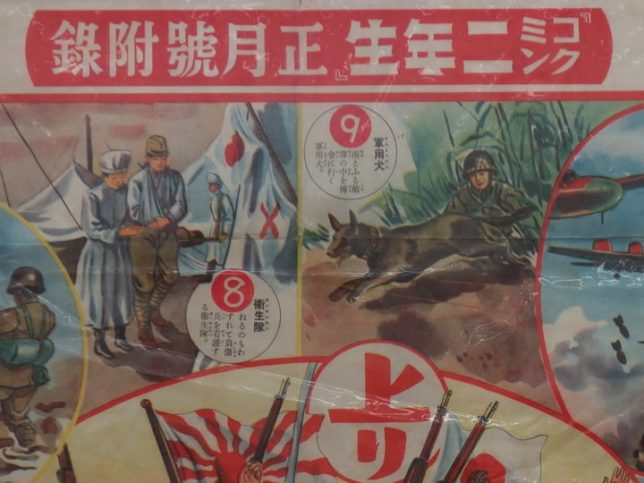
This logotype is Shogakukan’s “Shogaku Nineisei", right? At that time, an elentaly school was a national school, so the name of magazin was “Cokumin Ninensei".
(9) Soroku Dai-Toa Kyoei-Ken Tour (1944, “Ie no Hikari" appendix (Central Agricultural Society)
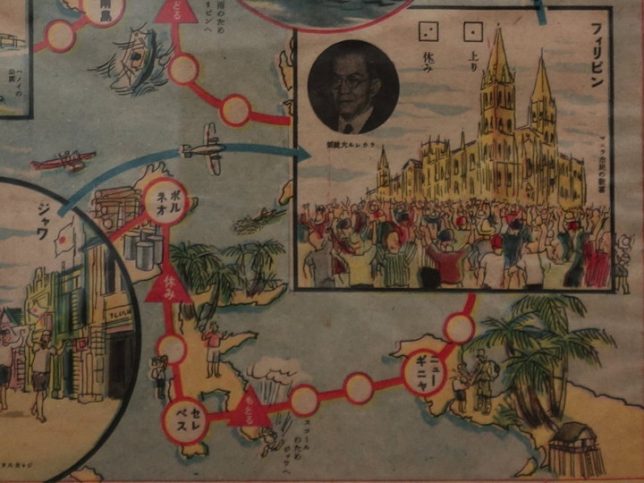
“Ie no Hikari" is an agricultural magazine, right? It is now the JA Group.
The sugoroku depicts a tour of various parts of Asia, starting from Japan.
The color is a little off, and the printing technology seems to have deteriorated.
In my blog, I wrote only about Sugoroku this time.
There were also other exhibits such as picture books, picture story shows, Menko and dolls, each of which was interesting.
I did a little search on e-sugoroku, and it seems that there have been various kinds of them since the Edo period. The oldest one is said to be “Jodo Sugoroku", which represents the world view of Buddhism.
[Reference] all sites were written in Japanese
* Shinshu War Materials Center “War and Toys Exhibition" (07/01/2019)
* The same “Why we don’t make claims" (2016/04/07)
* Tokyo Gakugei University Library, “What is E-Sugoroku?“
* Tokyo Metropolitan Library “Jodo Sugoroku“
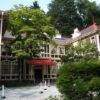
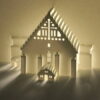
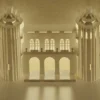
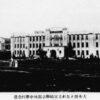
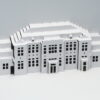
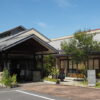
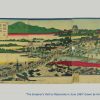
Recent Comments